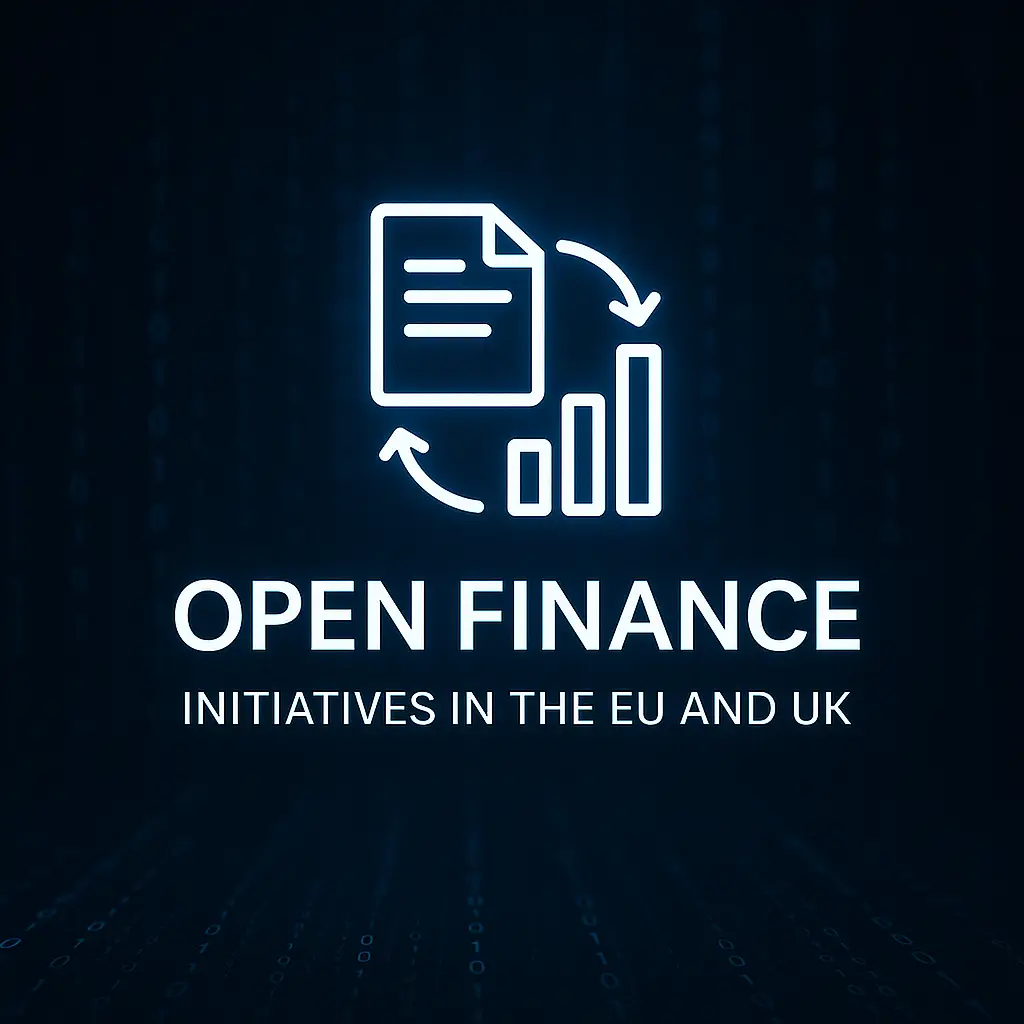Open Finance in the EU and UK: Empowering Consumers Through Data Sharing and Innovation
Abstract
Open Finance represents the next evolution in digital financial services, extending the principles of Open Banking to a broader range of financial products and institutions. Spearheaded by policymakers in the European Union (EU) and the United Kingdom (UK), Open Finance initiatives aim to enhance consumer control, foster innovation, and build a competitive ecosystem by enabling secure, consent-based access to a consumer’s full financial data. This paper explores the regulatory developments, technological foundations, industry implications, and key differences between the EU and UK approaches to Open Finance as of 2025.
1. Introduction: The Road Beyond Open Banking
Following the rollout of PSD2 (Revised Payment Services Directive) in Europe and the Open Banking initiative in the UK, both jurisdictions are now advancing toward Open Finance—a framework that expands data access beyond payment accounts to include mortgages, pensions, insurance, investments, savings, and consumer credit.
The goal is to create an open data economy in financial services where third-party providers (TPPs) can deliver innovative tools for budgeting, investing, borrowing, and beyond—all while giving consumers full visibility and control over their financial lives.
2. What is Open Finance?
Open Finance refers to the standardized, permissioned sharing of consumer financial data across a wide range of financial products and services through APIs (Application Programming Interfaces).
Key pillars include:
- Consumer consent and control (opt-in data sharing)
- Secure API frameworks
- Interoperability standards
- Regulated third-party access
3. Open Finance in the European Union (EU)
3.1 Legislative Developments
In June 2023, the European Commission proposed the Financial Data Access (FIDA) Regulation, aimed at building the legal foundation for Open Finance across the EU.
Key features of FIDA:
- Covers data beyond payments, including savings, pensions, investments, and insurance
- Creates financial data access platforms regulated under EU law
- Mandates consumer dashboards for managing data access rights
- Requires institutions to provide data access free of charge
FIDA is expected to be finalized in late 2025, with implementation beginning in 2026–2027.
3.2 Alignment with the European Data Strategy
Open Finance aligns with the EU’s broader vision for a single market for data, promoting data portability, fair competition, and innovation while protecting consumer privacy through the GDPR.
4. Open Finance in the United Kingdom (UK)
4.1 Smart Data Legislation
The UK’s approach to Open Finance falls under the Smart Data initiative, which seeks to enable consumers to share data with trusted third parties across various sectors—energy, telecoms, and financial services.
4.2 Key Features of UK Open Finance
- Extends data-sharing beyond payment accounts
- Overseen by the Financial Conduct Authority (FCA)
- Encourages industry-led standards, governed by the Joint Regulatory Oversight Committee (JROC)
- Supports development of digital ID and consent management tools
As of 2025, the UK government is preparing legislation for Smart Data schemes in financial services, with pilot programs expected to launch by 2026.
5. Benefits and Use Cases
| Category | Use Case Example |
|---|---|
| Personal Finance | Budgeting apps with access to loans, pensions, and savings |
| SMEs | Cash flow tools that combine credit and invoicing data |
| Investments | Robo-advisors using full portfolio visibility |
| Credit Risk | Lenders using holistic financial profiles for assessment |
| Insurance | Real-time underwriting based on transactional behavior |
Benefits include:
- Improved financial transparency
- More personalized products
- Better risk assessment
- Stronger competition
6. Risks and Regulatory Considerations
- Data security and breaches
- Consumer understanding and consent fatigue
- Standardization challenges across providers
- Regulatory fragmentation between EU and UK approaches
- Fair access for smaller fintechs vs. incumbents
Mitigation strategies include:
- OAuth 2.0-based consent mechanisms
- Tokenized access control
- Robust API standards
- Consumer education campaigns
7. EU vs. UK: A Comparative Overview
| Feature | EU (FIDA Regulation) | UK (Smart Data Framework) |
|---|---|---|
| Scope | Broad and legally mandated | Industry-led, sector-by-sector |
| Governance | European Commission and EBA | FCA and JROC |
| Consent dashboard | Mandatory | In development |
| Timeline | 2026–2027 rollout | 2025–2026 pilots |
| Data portability model | Regulated platforms | Market-led frameworks |
8. The Future of Open Finance
Open Finance is expected to evolve into Open Data ecosystems, ultimately converging with embedded finance, AI-driven financial tools, and real-time payments. Combined with innovations like CBDCs and digital IDs, Open Finance lays the groundwork for a truly digital financial economy.
9. Conclusion
The Open Finance initiatives in the EU and UK represent a paradigm shift in financial services, placing data ownership and control in the hands of consumers. By enabling secure, transparent, and standardized data-sharing environments, regulators are fostering competition, innovation, and personalization while balancing privacy and security. As we approach 2026, financial institutions, fintechs, and policymakers must collaborate to ensure that Open Finance delivers on its promise of a more inclusive and dynamic financial ecosystem.
References
- European Commission (2023). Proposal for a Regulation on Financial Data Access (FIDA)
- UK Department for Business & Trade (2024). Smart Data Roadmap
- FCA & PSR (2023). Joint Regulatory Oversight Committee Progress Update
- McKinsey & Company (2024). The Future of Data Sharing in Finance
- OECD (2023). Open Finance and Digital Innovation in Financial Services

